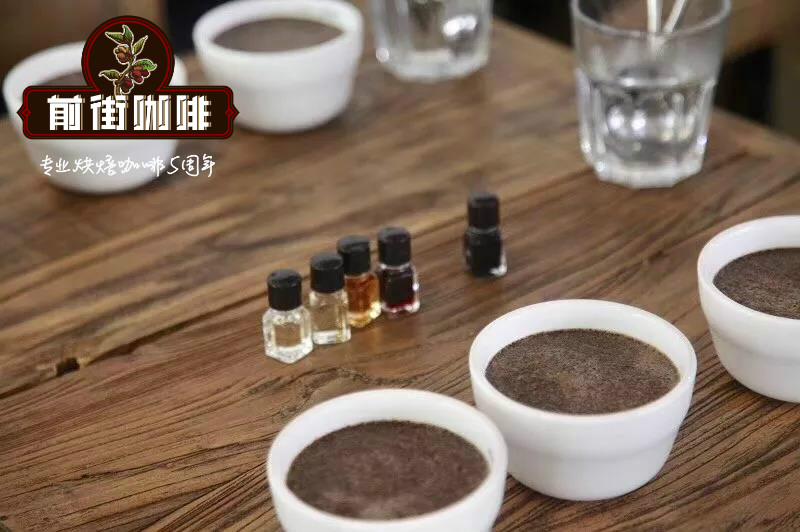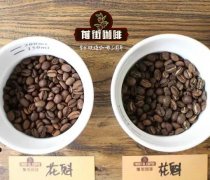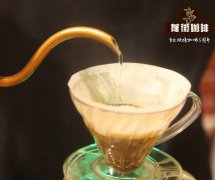Brazilian coffee beans origin and classification Brazilian Minas coffee beans are not good

Professional coffee knowledge exchange more coffee bean information please follow the coffee workshop (Wechat official account cafe_style)
At present, there are 2 million hectares of land in Brazil for growing coffee, and the largest is Arabica. These beans will eventually be sent to large bakers in various countries, that is, the well-known Santos (named after the port of export santos, not the producing area). Because of the coffee competition after 2000, the quality of coffee beans produced in the high-altitude areas of the south was appreciated, mainly by the farms around the Minas platform. Coffee quality is also the largest among Brazilian beans, such as Syracuse in the west of Minas and Matas in the east, Bashiya in the north or small farms in the south. Minas has almost become synonymous with Brazilian boutique coffee. In recent years, the coffee competition is accurate to be separated by treatment (water treatment / half-washing / half-sun / sun-drying), which has developed a variety of flavors, taste and finish, which is quite different from traditional Brazilian coffee. In particular, the half-sun method and the sun method perform best.
Since 1999, South Minas is the most successful manor in Brazil's "extraordinary cup" national treasure bean bidding activity, which is the backbone of Brazilian boutique coffee. As for the north-central mausoleum of Minas (Chapada de Minas) is not a boutique producing area, mostly for general commercial beans. To sum up, South Minas, the central and western Mesa of Minas (i.e. Serrado) and the higher forest areas in the southeast can all be called boutique producing areas of Minas province.
Coffee was first introduced to Brazil in the early 18th century. In 1727, the Brazilian government sent a personable army officer to secretly bring coffee seeds back to Brazil from French Gaiana under the pretext of mediating border disputes. It is said that the governor's wife of French Gayana was so fascinated by the officer that she secretly brought coffee tree seeds to him at a farewell dinner party. At present, there are 2 million hectares of land in Brazil for growing coffee, and the largest is Arabica.
Brazil accounts for about 1/3 of the world's annual coffee production (by far the world's largest coffee producer and exporter). In 2015, Brazil produced a total of 36.89 million bags of coffee (each bag of 60kg). How many cups of coffee can you imagine?
Brazilian coffee does not seem to have a good reputation all the time. It is often heard that it is heavy rather than quality. In fact, Brazilian coffee has many little-known features. Bruna Costa, the founder of It Caf é, is a coffee fan and coffee producer. He grew up on a coffee farm in Sao Paulo, Brazil, visited many coffee producing areas and mastered a wealth of coffee knowledge, especially fine Brazilian coffee like the back of his hand. As a supporter of Brazilian coffee, he wants to share some experiences with us, hoping that we can have a new understanding of Brazilian fine coffee.
According to this standard, the producing areas of Brazil can also be divided into five grades:
Extremely meek: South Minas, Serrado platform in the central and western part of Minas / Mojiana / Bahia Diamond Plateau in northeastern Sao Paulo province
Supple: slightly higher in Bahia / Minas southeast forest / Parana / San Espiritu (mausoleum) / central and western S ã o Paulo
A little softer: East and northeast of Minas
Not easy to read: Espiritu Santo / Parana (low altitude)
Iodine choking: slightly lower southeast of Minas / Espiritu Santo (flat)
Related recommendation: Brazilian South Minas Coffee introduces Minas as synonymous with Brazilian boutique coffee.
Important Notice :
前街咖啡 FrontStreet Coffee has moved to new addredd:
FrontStreet Coffee Address: 315,Donghua East Road,GuangZhou
Tel:020 38364473
- Prev

Introduction to the Flavor of Coffee processing methods of Coffee Bean
Professional coffee knowledge exchange more coffee bean information Please pay attention to the current situation of coffee workshop (Wechat official account cafe_style) Coffee has been cultivated in new places inland, and Panama is famous for its new coffee production in Brazil after the war, but because of its natural conditions, it is still inferior in quality compared to what is produced in Sao Paulo. Now, Saint.
- Next

Where are the good coffee beans in Brazil? how about coffee beans in Minas, Brazil?
Professional coffee knowledge exchange more coffee bean information please follow the coffee workshop (Wechat official account cafe_style) Brazil is the world's largest coffee producer accounts for about 33% of coffee production, but because Brazil is located in the tropical rain forest, the terrain is flatter and less high-altitude mountain forests, most coffee is grown in low-altitude non-volcanic soil, and there is not much shade as shade.
Related
- Does Rose Summer choose Blue, Green or Red? Detailed explanation of Rose Summer Coffee plots and Classification in Panamanian Jade Manor
- What is the difference between the origin, producing area, processing plant, cooperative and manor of coffee beans?
- How fine does the espresso powder fit? how to grind the espresso?
- Sca coffee roasting degree color card coffee roasting degree 8 roasting color values what do you mean?
- The practice of lattes: how to make lattes at home
- Introduction to Indonesian Fine Coffee beans-- Java Coffee producing area of Indonesian Arabica Coffee
- How much will the flavor of light and medium roasted rose summer be expressed? What baking level is rose summer suitable for?
- Introduction to the characteristics of washing, sun-drying or wet-planing coffee commonly used in Mantenin, Indonesia
- Price characteristics of Arabica Coffee Bean Starbucks introduction to Manning Coffee Bean Taste producing area Variety Manor
- What is the authentic Yega flavor? What are the flavor characteristics of the really excellent Yejasuffi coffee beans?

